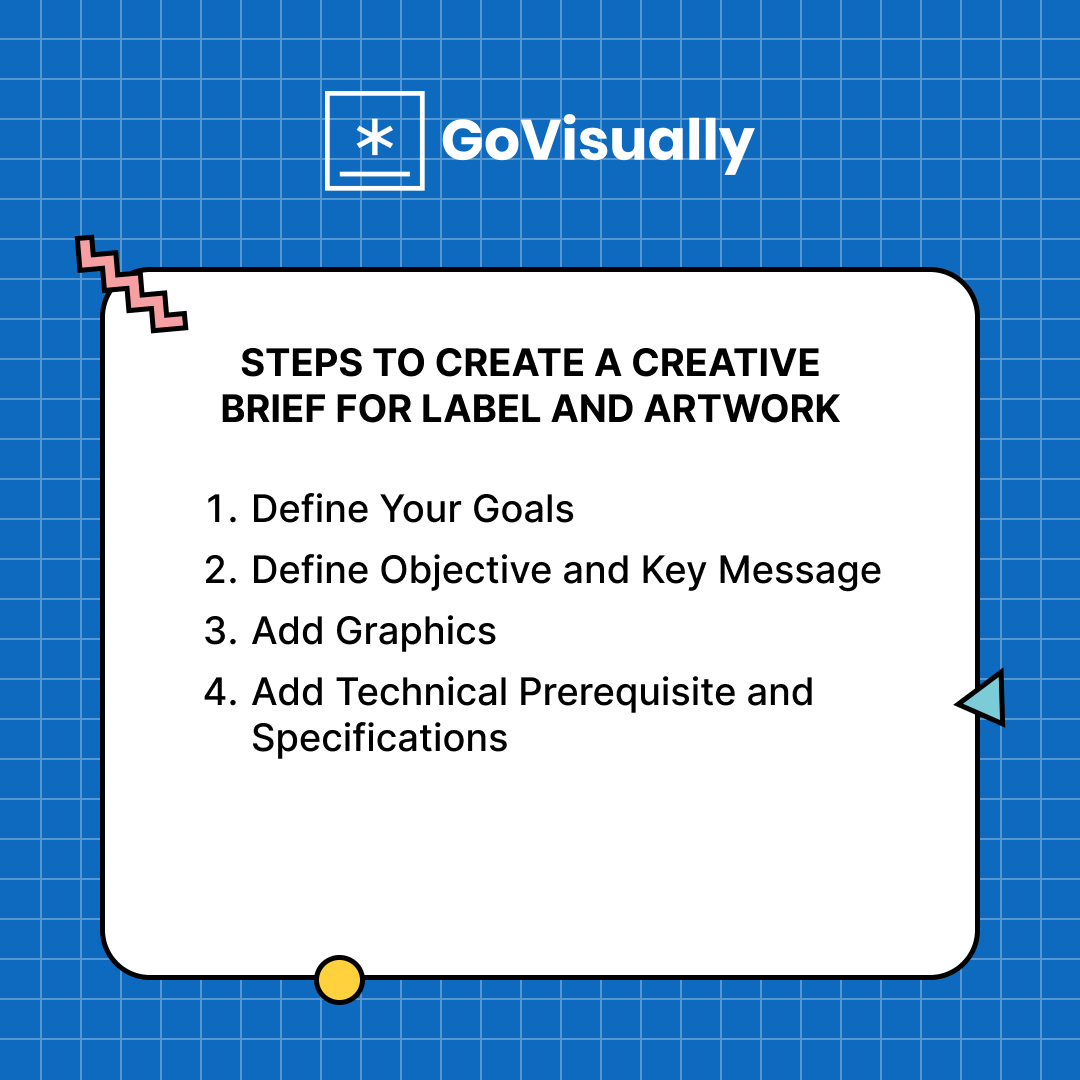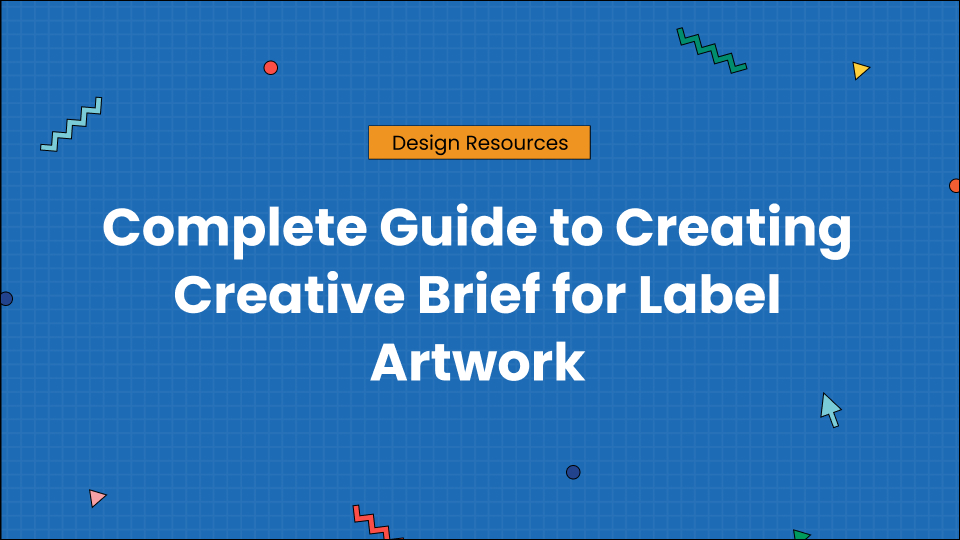Heard of creative brief success stories and now you want to try it for your brand too?
You have reached the right place! This guide will exactly answer all your questions related to creative brief and help you understand how it can transform your artwork approach. Here’s an example to start with.
In 1988 Nike launched its iconic “Just Do It” using a creative brief that led to a sales growth by 1000%. Their creative brief was discussed and developed after several internal discussions and iterations. Apparently, the “Just Do It” campaign is a prime example of how a well-crafted creative brief can lead to significant business outcomes, including increased brand awareness, customer engagement, and, ultimately, higher profits.
Ready to know more about creative briefs now? Here you go.
Table of Contents
What is a Creative Brief?
You can think of a creative brief as a simple plan for the project that you are currently working on. It is one way to think about your creative brief. This document outlines the objectives, prerequisites, and expectations for the artwork used on your label. It is for the artwork that will be used on your label. It will serve as the foundation upon which your design will be built.
Importance of Creative Brief Template
A creative brief aids project planning and execution. Thus, . Here are 5 reasons why creative brief is important
1. Set project objectives, outcomes, and deadlines:
An effective creative brief include project
- objectives
- deadlines
- deliverables
- constrains
- audience
- budget
- approval items.
A creative brief acts like a recipe that needs to be followed while working on the project.
2. Keep Everyone Intact:
These notes keep the team on track throughout the project by
- providing regular updates
- setting transparent communication among all the stakeholders
- clarifies roles and responsibilities along with deadlines of each task
- providing a means to offer feedback loops
3. Measure Success:
A creative brief incorporates measurable goals and success indicators to evaluate the advancement of the project. Monitoring these predefined success metrics including engagement metrics, conversion rates, and other KPIs helps measure the effectiveness of projects.
4. Recognises Your Audience
Include specific insights about the your targeted audience’s preferences. These preferences includes traits, interests, habits, demographics, and pain points. Using this information you can easily create targeted brand messaging for running campaigns, creating targetd products for your label, etc.
As per the Adobe survey 2020, 64% of the market believes that creative briefs format are essential for the success of business.
How to Write a Creative Brief for Label Artwork? A Step By Step Process
Want to create a creative for your label artwork, but not sure where to start? Here’s the guide that answers all your questions!

1. Define Your Goals
Make sure you are clear about the label artwork project’s goals and aims. Say whether the goal is to spread a certain message, raise knowledge of a brand, or push a new product feature. If you want a brand, do you want one that is funny and crazy or sophisticated and made for minimalistics? Once you have a thorough understanding of these specifics, they will assist you in determining the label artwork that you want to display on your label.
Target Audience: In gathering information about your target market, you will learn about their age, gender, way of life, and personal preferences. Which of the following are the most important things people who read your work care about?
2. Defining Objectives and Key Messages
Product Benefits and Features
Once you have determined what your brand represents. You should note the primary concepts you want people to remove from the label design. Before you list the benefits and drawbacks of your product, there are a few things you should do to make it stand out from the competition. It is necessary to ensure that the artwork conveys the appropriate message, whether about environmentally friendly packaging, cutting-edge technology, or new organic ingredients.
Brand Storytelling: When it comes to telling your brand’s story, the artwork featured on your label can be of great assistance. The motivation pertains to the primary reason you acted in a particular manner. The more you talk about things that are significant to people, such as their beliefs, stories, or history, the more likely they will remember your brand.
3. Add Graphics
Using graphics in the label and packaging industry really speaks to the audience. Here’s how your brand can communicate brand value through graphics.
- Visual Guideline
Having clear visual guidelines and places to get ideas to assist you with the design process is beneficial. If you want to communicate with people, you want to reach an audience. You should use images, fonts, colors, and designs consistent with your brand and speak directly to them.
Make a mood board as the first step in the process. The picture, the texture, and any other design elements you use should all make it clear that you are going for a particular style at this point. In addition to providing designers with something to look at, this ensures that the design continues to move in the right direction. You are getting things connected to the brand, such as logos and colors. Font style guides are the second step in building a brand.
- Size and Layout
It is essential to remember the package’s precise dimensions and contours. It would help if you thought about where the labels and barcodes will be placed, also, to the areas where the paper will absorb liquid.
- Motivate Creativity
Motivate creativity within the limits of your brand’s rules. Use mood boards, examples of good label design, and examples from other industries to give them ideas. For example, PepsiCo’s “Design Our Pepsi Can” campaign asked people to send in their own label designs. This encouraged creativity and community involvement while strengthening the brand’s link with its audience
4. Add Technical Prerequisite and Specifications
Here are some technical prerequisite and specifications you need to add in your creative brief. This will prevent any legal issues in future.
- Technical Needs and Requirements
To ensure that the artwork on the label complies with all rules set forth by the government and the industry, you must include all technical information and requirements. When encouraging people to remember your brand, consistency is paramount. As a result, you need to ensure that these components can blend in perfectly with the artwork created for the label.
- Making use of Prints
You should have a conversation with your printer about the various printing options, finishes, and materials available to you. Regarding label art, the final appearance and sensation can vary greatly depending on multiple factors. Including the type of paper, the ink, and the finishing methods utilized.
What are the different types of Creative Briefs?
Today the trend of creative brief has reached to demanding level in the industry, leading to the creation of multiple types of creative briefs. And this can get really overwhelming if you’re a beginner. So here we have mentioned only four main types of creative brief.
1. Traditional Creative Briefs:
- Goals: The primary goal of this project is to design a label that complies with government regulations, such as FDA labeling requirements for alcoholic beverages, while effectively promoting brand recognition and recall.
- Audience: The target audience includes sophisticated consumers aged 25-45 who appreciate craft spirits and are willing to pay a premium for quality products.
- Message: The label artwork should communicate the brand’s heritage, authenticity, and commitment to craftsmanship, emphasizing its unique selling points and story.
2. Visual Briefs:
- Mood Boards: Develop mood boards showcasing the desired aesthetic for the label, including color palettes inspired by the brand’s natural ingredients, such as earthy tones for whiskey or vibrant hues for flavored vodkas.
- Inspiration Boards: Curate visual inspiration from competitor labels, industry trends, and cultural references to inform the creative direction and ensure differentiation in a crowded market.
- Design Style: Communicate preferences for tactile finishes, such as embossing or foil stamping, to enhance shelf appeal and convey a sense of luxury and exclusivity.
3. Modern Creative Briefs:
- Digital Presentation: Create a dynamic digital presentation using tools like Adobe Creative Cloud or Canva to illustrate design concepts and technical specifications, including dimensions, bleed areas, and color profiles for print production.
- Interactive Prototypes: Develop interactive prototypes using software like InVision or Figma to simulate user interactions with the label design, allowing stakeholders to visualize how the artwork will appear on different packaging formats and materials.
- Accessibility: Ensure that the digital brief is accessible to remote team members through cloud-based collaboration platforms like Google Drive or Microsoft Teams, enabling real-time collaboration and feedback exchange across different time zones.
4. Collaborative Briefs:
- Workshop Sessions: Facilitate collaborative workshops involving key stakeholders, including clients, designers, marketers, and regulatory experts, to co-create the creative brief and align on project objectives, constraints, and timelines.
- Brainstorming Activities: Encourage participants to share ideas, insights, and creative suggestions using digital white boarding tools like Miro or MURAL, fostering a culture of innovation and collective problem-solving.
- Online Platforms: Utilize project management platforms like Asana or Trello to document ideas, track feedback, and assign tasks, ensuring transparency and accountability throughout the creative process.
Conclusion
To create exciting label art, you need to plan out your steps and begin with a creative brief that is crystal clear. After that, you will have a chance of accomplishing what you set out to do. The manual process of drafting a creative brief can take longer than the actual work itself.
That’s why GoVisually now offers an expertly curated creative brief feature to streamline the time-consuming process of creating creative briefs, which can take hours manually.
Try GoVisually Smartnotes
Centralize creative briefs, client intake documents, meeting notes in one place.
Are you ready to take the art on your labels to a new level? Try out Govisually’s Creative Brief feature to see how powerful it can be for easy teamwork and beautiful design.
FAQs
1. In what way do you write a creative brief for graphic design?
In the creative brief for your graphic design project, you should specify the deadlines that you want to meet. Talk about the project’s objectives, and identify the target audience you want to communicate with. In addition to that, you should incorporate brand guidelines and a complete list of technical requirements.
2. How are a design brief and a creative brief different from each other?
A design project’s comprehensive requirements and objectives are outlined in a document called a design brief. This document will provide information regarding the design, including how it should appear, function, and be laid out. While a creative brief will allow you to acquire additional information regarding the project’s objectives and the intended audience, brand identity, and message. Now that you know these things, you can generate more creative ideas.
3. What are the 7 parts of creating a design brief?
Here are the 7 key elements of creating a design brief; project overview, target audience, brand guidelines, project timeline, cope of work, budget, inspiration and examples, and communication and feedback.




